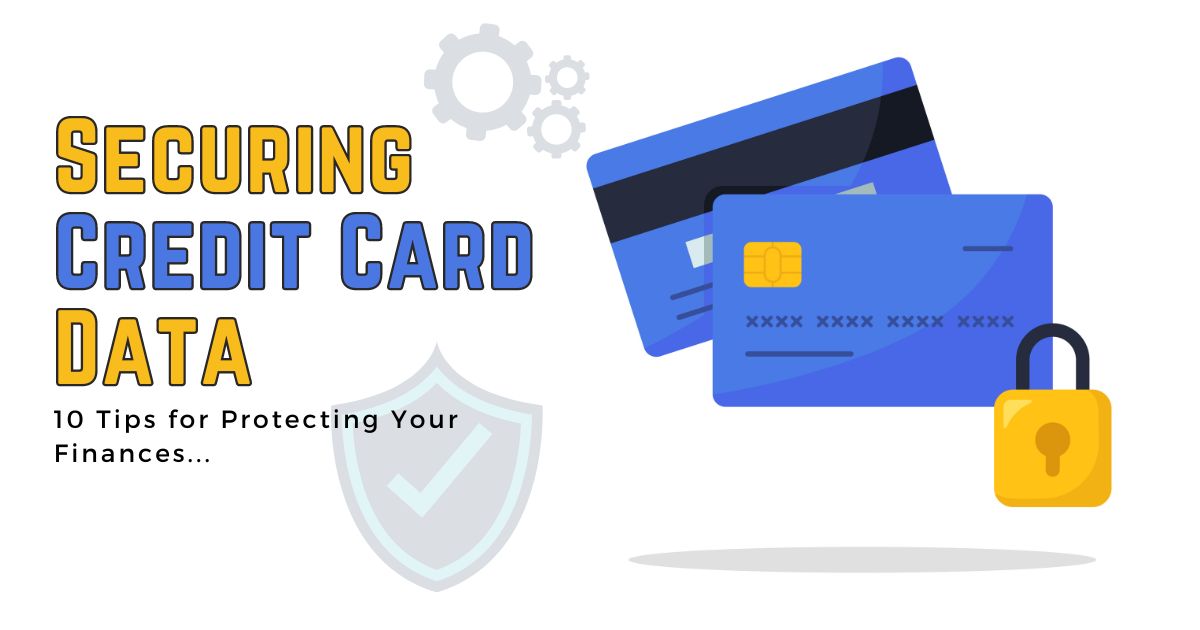
| January 9th, 2020 |
Protect Your Finances — 10 Tips for Securing Credit Card Data!
Introduction —
In today’s digital age, where online transactions have become the norm, securing credit card account information is of paramount importance. With cybercriminals constantly devising new methods to steal sensitive data, it’s crucial to stay vigilant and proactive in protecting your financial information. Here are ten key tips to help you secure your credit card account information and prevent unauthorized access and fraudulent activities:
Regularly Monitor Your Accounts:
Stay proactive by regularly monitoring your credit card statements and transactions. Check for any unfamiliar charges or suspicious activities and report them immediately to your card issuer.
Enable Transaction Alerts:
Most banks and credit card issuers offer transaction alerts via email or text message. Enable these alerts to receive real-time notifications for any transactions made with your credit card. This allows you to detect and respond to unauthorized activities promptly.
Use Strong, Unique Passwords:
When setting up online accounts associated with your credit card, use strong, unique passwords for each account. Avoid using easily guessable passwords like birthdays or common phrases. Consider using a reputable password manager to generate and store complex passwords securely.
Implement Two-Factor Authentication (2FA):
Enable two-factor authentication whenever possible, especially for online banking and shopping platforms. This adds an extra layer of security by requiring both a password and a secondary verification method, such as a one-time code sent to your phone or email.
Be Wary of Phishing Attempts:
Cybercriminals often use phishing emails or fake websites to trick users into providing their credit card information. Be cautious of unsolicited emails or messages requesting sensitive information and avoid clicking on suspicious links. Verify the authenticity of websites before entering any personal or financial details.
Secure Your Devices:
Ensure that all devices you use for online transactions, such as computers, smartphones, and tablets, are protected with up-to-date security software and firewalls. Regularly install software updates and patches to patch known vulnerabilities and prevent malware infections.
Use Secure Wi-Fi Networks:
Avoid conducting online transactions, especially those involving sensitive financial information, over public Wi-Fi networks. Instead, use secure, password-protected networks or consider using a virtual private network (VPN) for added encryption and security.
Limit Sharing of Credit Card Details:
Only share your credit card information with trusted merchants and websites. Avoid providing your credit card details over the phone or through email unless you initiated the transaction and verified the recipient’s identity.
Regularly Review Privacy Settings:
Review the privacy settings of your online accounts, especially social media and e-commerce platforms. Limit the amount of personal information you share publicly to reduce the risk of identity theft and unauthorized access to your financial accounts.
Report Lost or Stolen Cards Immediately:
If your credit card is lost or stolen, report it to your card issuer immediately to prevent unauthorized charges. Most issuers offer 24/7 customer support for reporting lost or stolen cards, so don’t hesitate to contact them as soon as you notice any discrepancies or suspicious activities.
Conclusion —
Securing your credit card account information requires a combination of vigilance, proactive measures, and adherence to best security practices. By following these ten key tips, you can significantly reduce the risk of credit card fraud and protect your financial well-being in today’s digital landscape. Stay informed, stay vigilant, and safeguard your finances from unauthorized access and fraudulent activities.